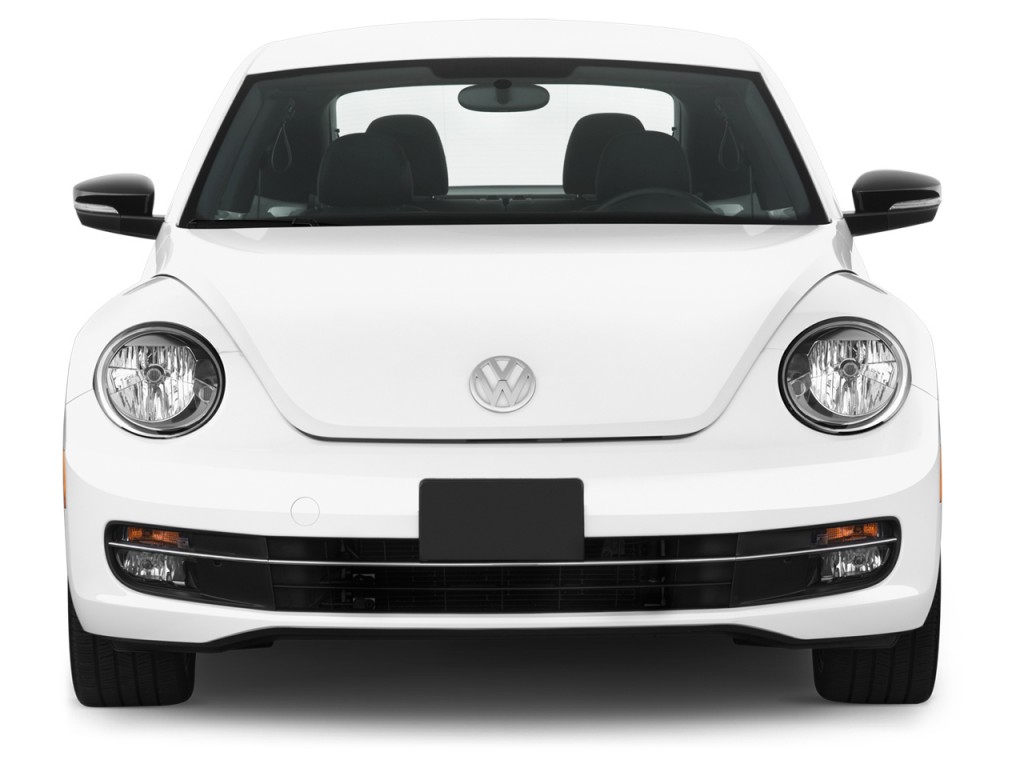One of Volkswagen’s promotional billboards for the latest version of their popular Beetle proclaimed, “It’s a boy!” in reference to the new styling the car sported for 2012. That would seem to suggest that perhaps the model prior to 2012 was not so boyish. Have a look and decide for yourself.

2012: It’s a boy!!! Earlier: It’s a ………… ???
As it turns out, your judgement on this is probably pretty good, and it probably agrees with how your friends would evaluate the matter. And, as it turns out, people in rural Ethopia would also agree. So, why is that?
What would you say about this face?
There’s a bit of a story here, and it has to do with human evolution and the importance of making quick and accurate judgements about others’ intentions. In fact, perhaps the most important elements of our visual world are other people’s faces. Recognizing predators and potential meals has been very important in the course of human evolution, but most scientists who study these things consider other human beings to have been the most important elements of human ecology throughout our evolution. Over the course of our evolutionary history, people who were best at quickly and accurately determining whether a face they were seeing was familiar or not, was friend or foe, or was angry or ecstatic would have been more likely to fare well in the game of life.
In fact, much study has shown that human faces express emotions in both obvious and subtle ways, and that both the expression and recognition of emotions is a human universal. People from Gnome to Namibia recognize smiles on each other’s faces and know what a grimace and a scowl indicate on the face of the other. In fact, people who have never seen a human face (those who are unsighted from birth) were found to utilize the same facial expressions to correspond to the same internal states as the sighted.
It is also the case that faces change with age, and the way faces change with age is also universal. It doesn’t take a developmental biologist to know that children have relatively larger foreheads and eyes compared to adults, but less prominent brows, noses, and cheekbones. There are similar suites of differences that allow us to easily (but not perfectly) distinguish males from females and even dominant from less dominant males. Prior to sexual maturity, it is often difficult to distinguish the sexes based on their faces, but as people reach sexual maturity (in other words, as the difference between the sexes begins to matter biologically), the differences become more pronounced.
So, what’s this got to do with your car? Well, noticing that the front end of cars are built along a symmetrical design pattern similar to that of a simplified human face (hood/ windshield = forehead; rear-view mirrors = ears; headlights = eyes; grill = nose/mouth), scientists in Austria, the U.S. and Ethiopia teamed up to examine whether we applied the same sort of assessment to the “faces” of cars as we do to other people. In other words, would a big roundish hood and big headlights make a car seem childlike? Or would wide-set eyes, a broad hood, and a downward curled grill make a car seem like an angry man. And crucially, would people who weren’t normally exposed to cars and car marketing see the same things as people who live in a world of cars.
Big eyes, round, bulbous forehead, wide mouth and prominent ears. It's a baby!
In short, yes. In their study, Ethiopian villagers who, on average, had very little knowledge of cars and were not exposed to any marketing by car companies provided the same ratings of age, sex, and a social dominance as did Viennese city-dwellers. Whether Austrian or Ethiopian, participants rated cars with headlights that were larger and closer together are “younger.” As headlights became narrower, they were rated as more masculine. Cars with broad, wide grills were rated as more socially dominant. So, we do apply the same judgements to the front of cars as we do to faces, and this appears to be a human universal.
This Mazda seems to have a big smile, but also narrowed eyes that suggest focus or even anger. Is this Mazda emotionally confused?
Of course, this begs the question: What kind of face do you climb into everyday? Is your car your baby? Your bad boy? Your reliable side-kick? Are there a set of features that make you think, I want that car! Are they the same or different as the features that attract you to another person? Perhaps it’s worth a quick peak.
At BeyondThePurchase.Org we are researching the connection between people’s spending habits, happiness, and values. To learn about your spending habits, what influences your buying behavior, and how you define the good life, first Login or Register with Beyond The Purchase, then take our Materialistic Values Scale, our Consumer Susceptibility to Interpersonal Influence Scale, and our Beliefs about Well-being. We think you may learn a lot about what causes you to part with your hard-earned money.
This blog post was written by Kerry Cunningham, a member of the Personality & Wellbeing Laboratory and recent M.S. graduate in Industrial-Organizational Psychology at San Francisco State University. Follow @kerryfc

